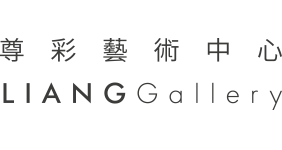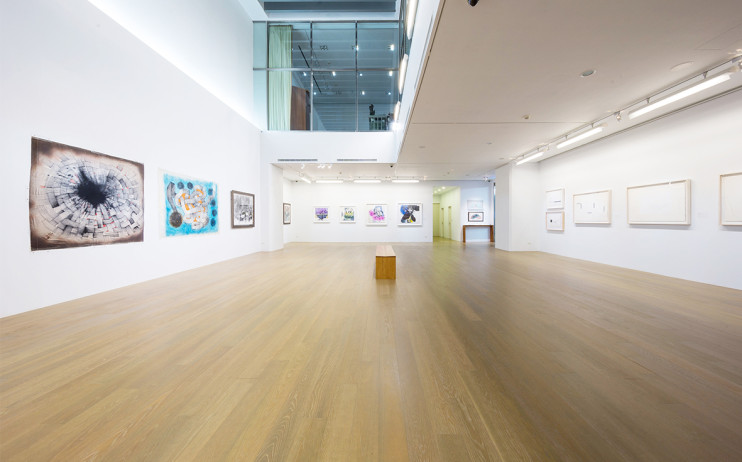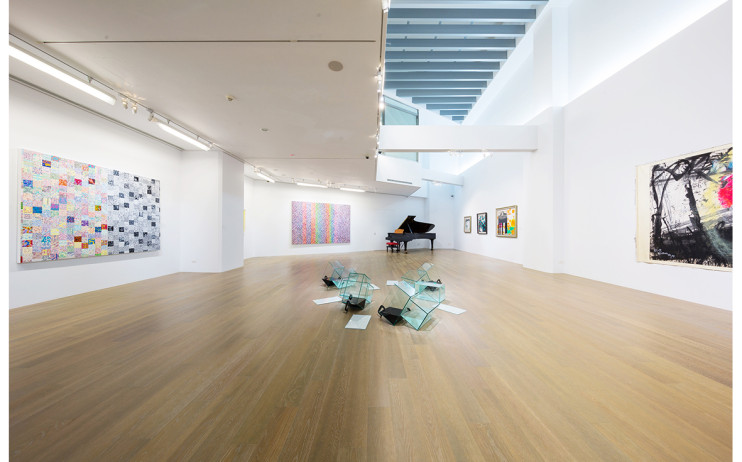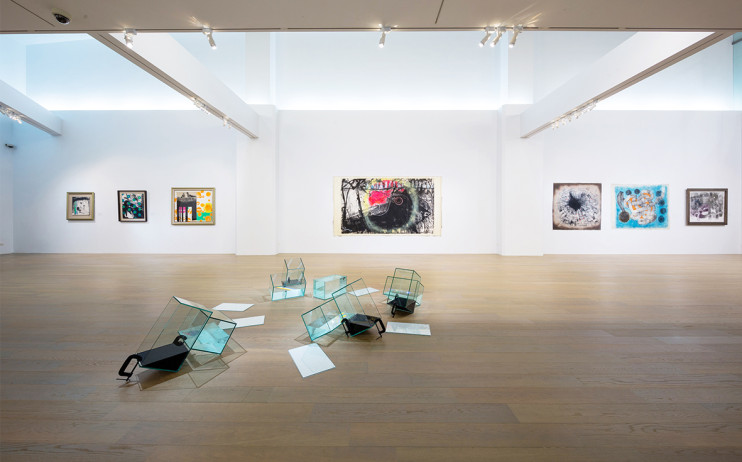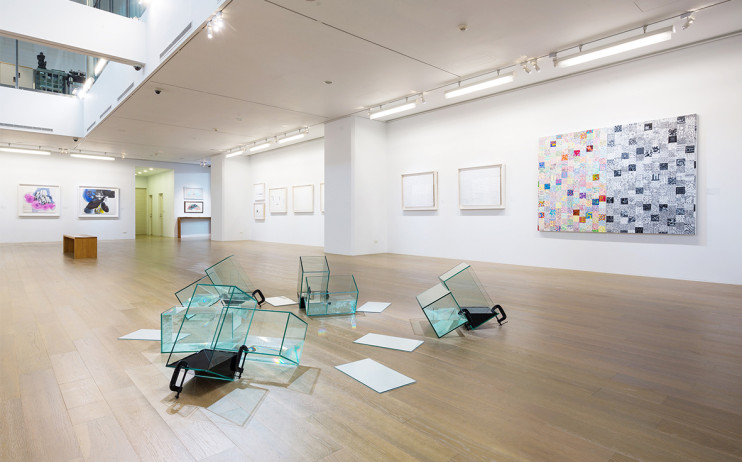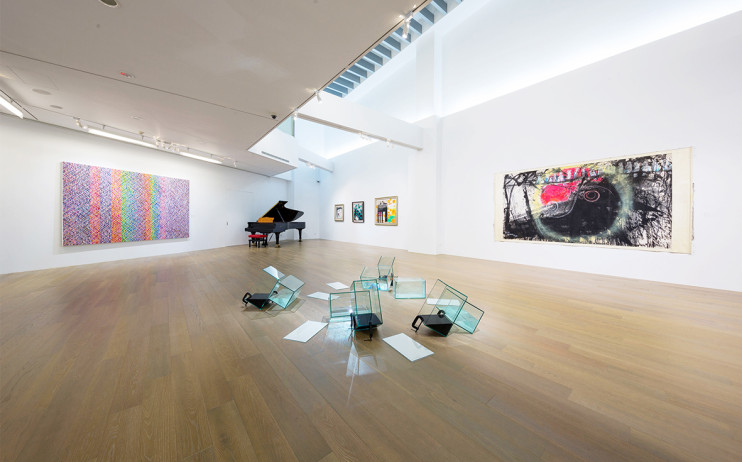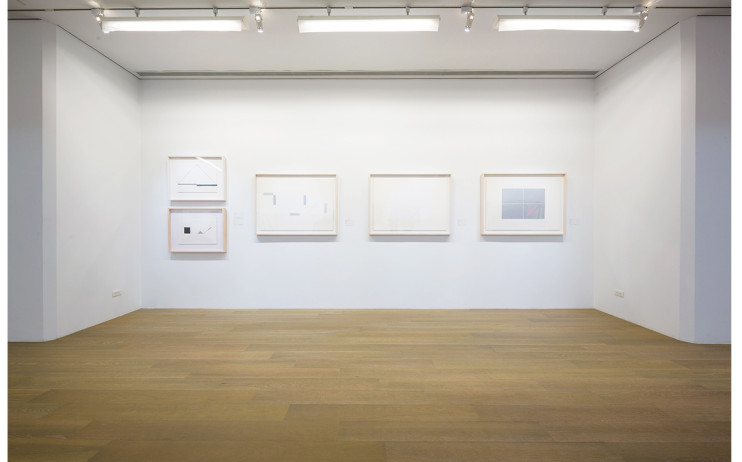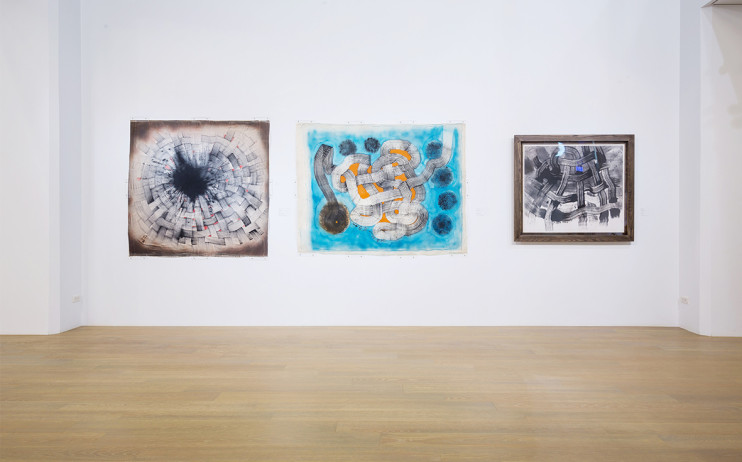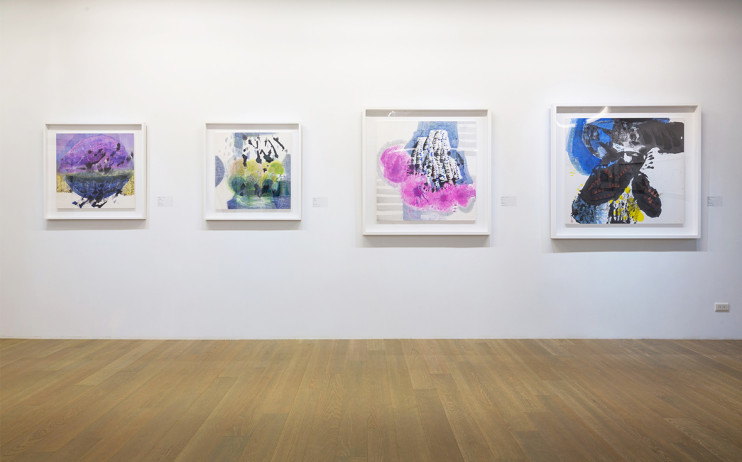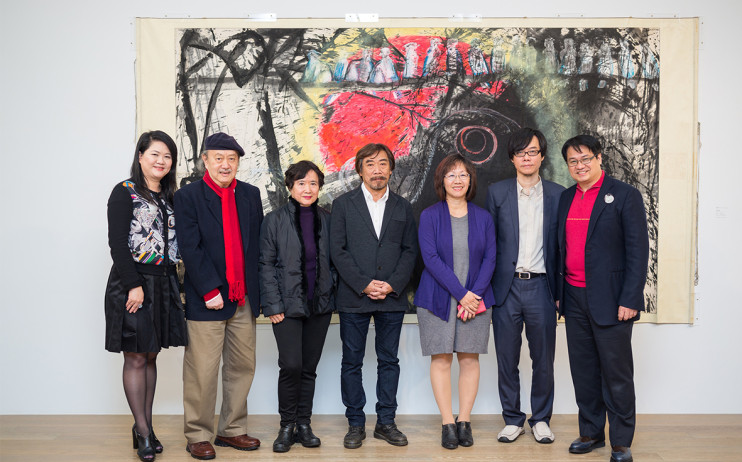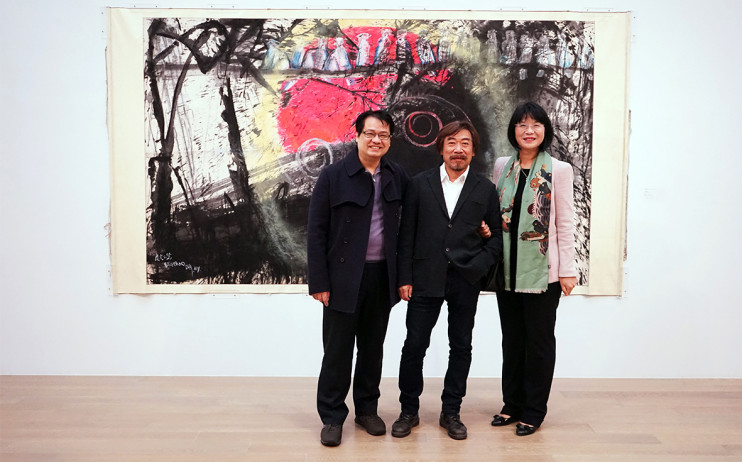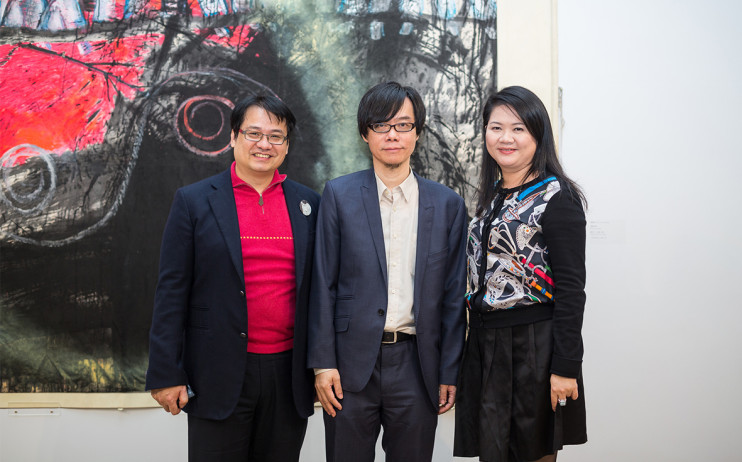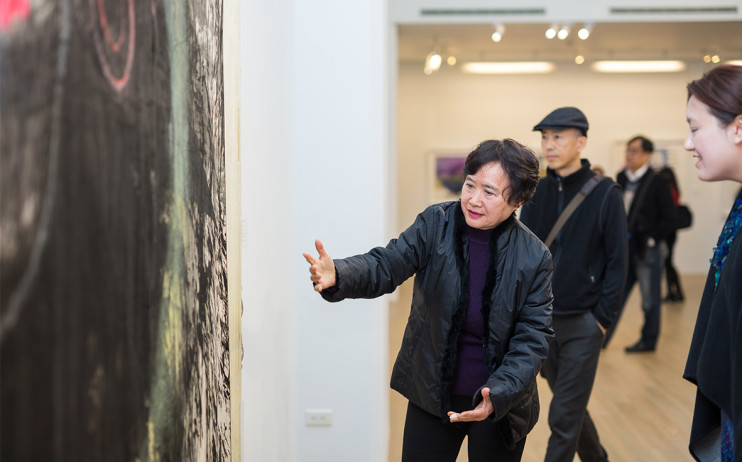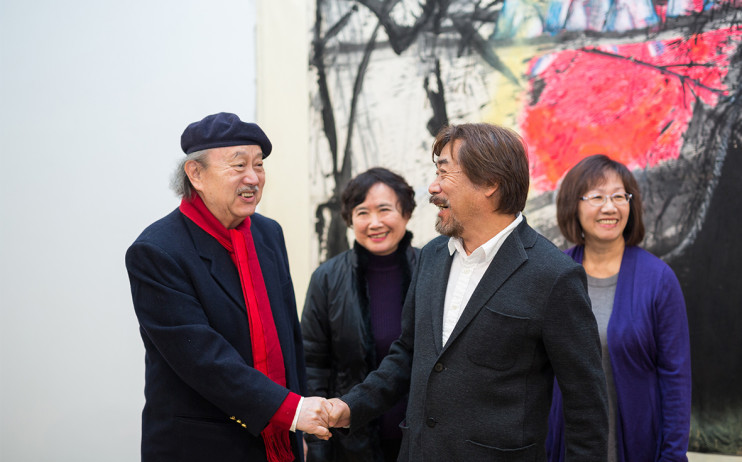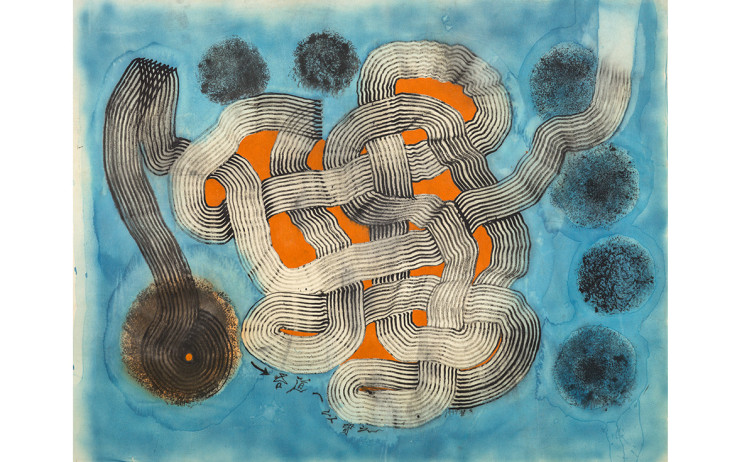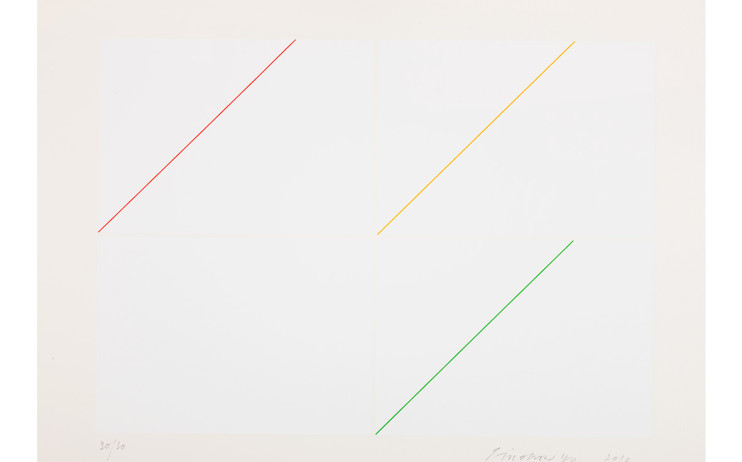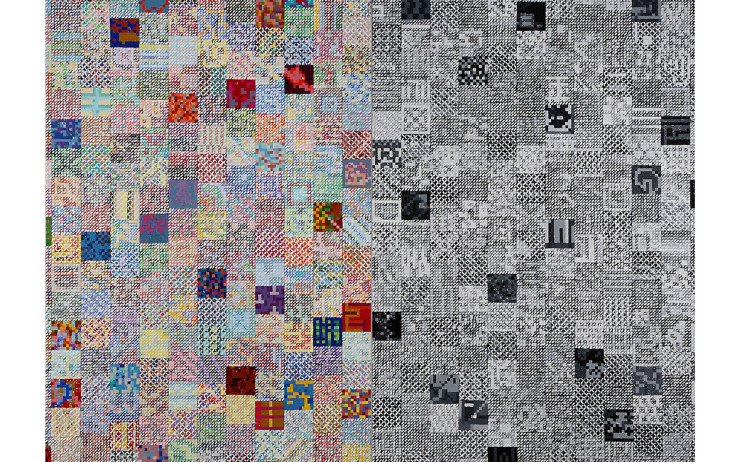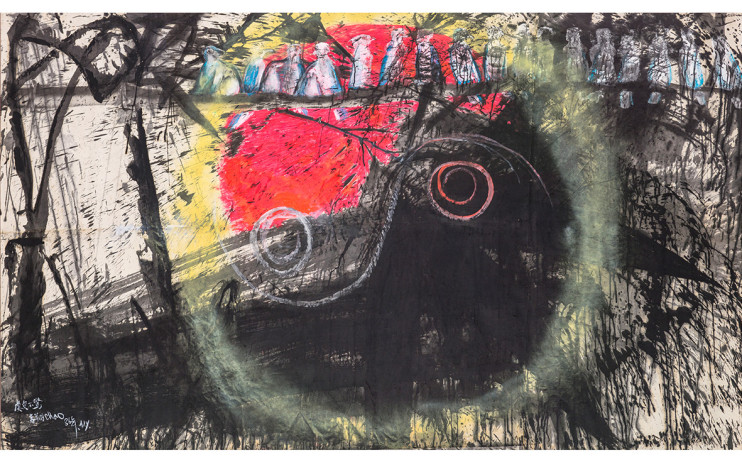Transcendence and Symbol: The Exhibition of Neoplastic Art in Taiwan
- 十二月 16, 2015
- Exhibitions
- Duration: 2015.12.19. Sat. – 2016.01.31. Sun.
- Curator: Pai Shih-Ming (Professor, Department of Fine Arts, National Taiwan Normal University)
- Artists: Chao Chung-Hsiang, Chu Ko, Richard Lin, Lee Chung-Chung, Tsong Pu
American abstract painting had a profound impact upon the modern art movement that reached its height in the 1960s. The movement continued to explore the shape and geometry by deconstructing images. It was the most important step in the modernization of fine arts in the post-war Taiwan that resulted in the appearance of avant-garde and other experimental art forms. Abstraction had a huge influence not only on oil painting, but also on ink painting, printmaking, ceramics, sculpture, and even architecture. Neoplastic art became the mainstream of modern art in Taiwan and prevailed in the art scene until the 1980s. It supported the expansion of mediums, techniques and ideas, and also benefited the integration into international community.
Eliminating an image and exploring the shape, materials, structure and other independent aesthetic values was the most important goal of abstract art. Simultaneously it struggled with critical views from academics, traditionalists and officials. In modern abstract art the form replaced the content, the thoughts and ideas exceeded the descriptions; absolute and unrestrained, independent and un-isolated, tangible yet intangible, physical and mental became the main qualities.
The five artists, Chao Chung-Hsiang (1910-1991), Chu Ko (1931-2011), Richard Lin (1933-2011), Lee Chung-Chung (b. 1942) and Tsong Pu (b. 1947), whose works are on display in this exhibition, represent three different generations of the development of abstract art in post-war Taiwan. Despite very different backgrounds, their creative motivations and artistic achievements were the same. In terms of painting style, pre-war Fauvism gave up its positions to expressionism, surrealism, geometric abstractionism, absolutism, minimalism, neoplasticism, structuralism, and other -isms. The use of mediums has also expanded to semi-automatic techniques, ready-made objects, collage, rubbing, mixed media, and installations. These artists jointly constructed diverse appearances of neoplastic art in post-war Taiwan.
